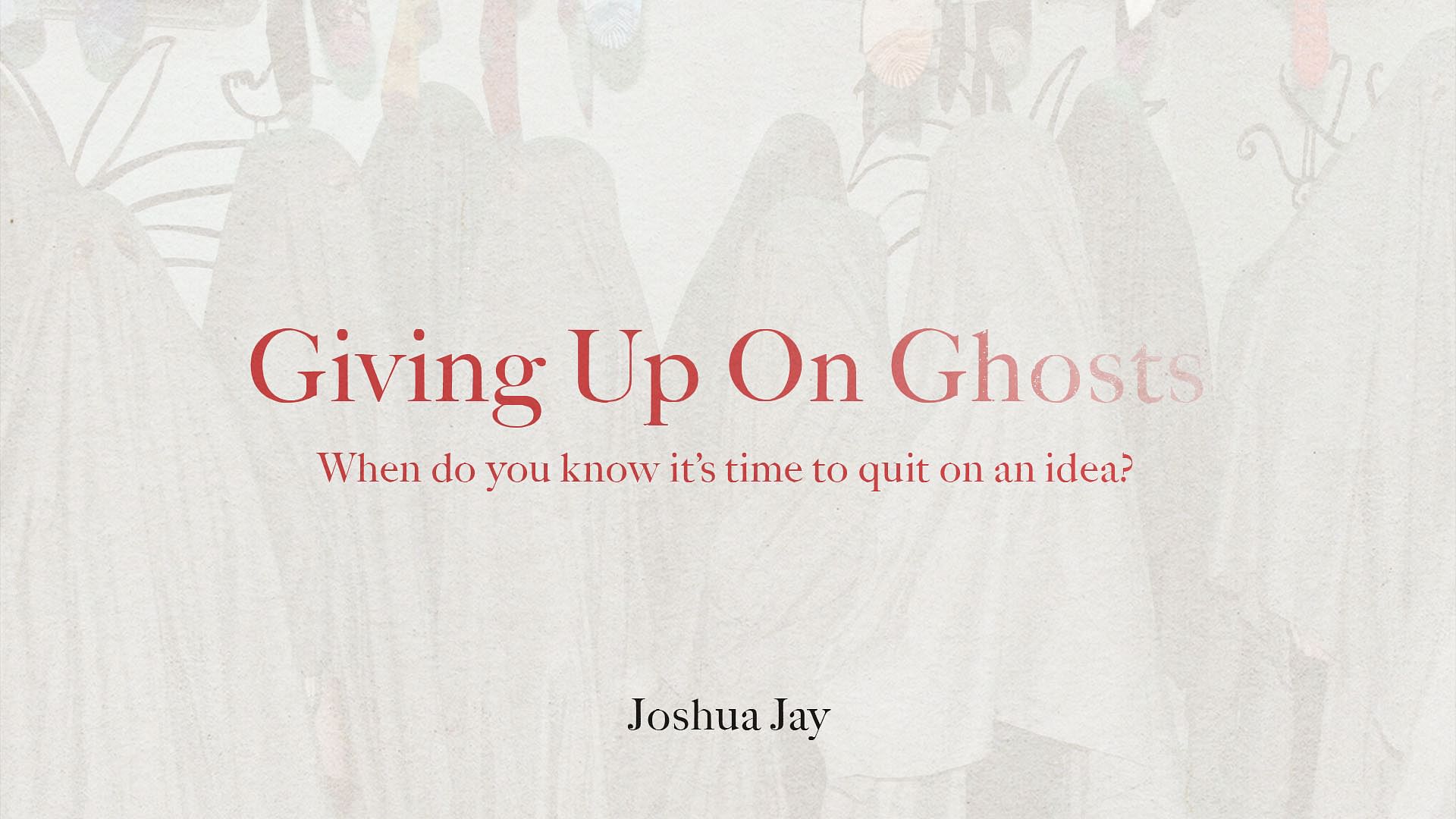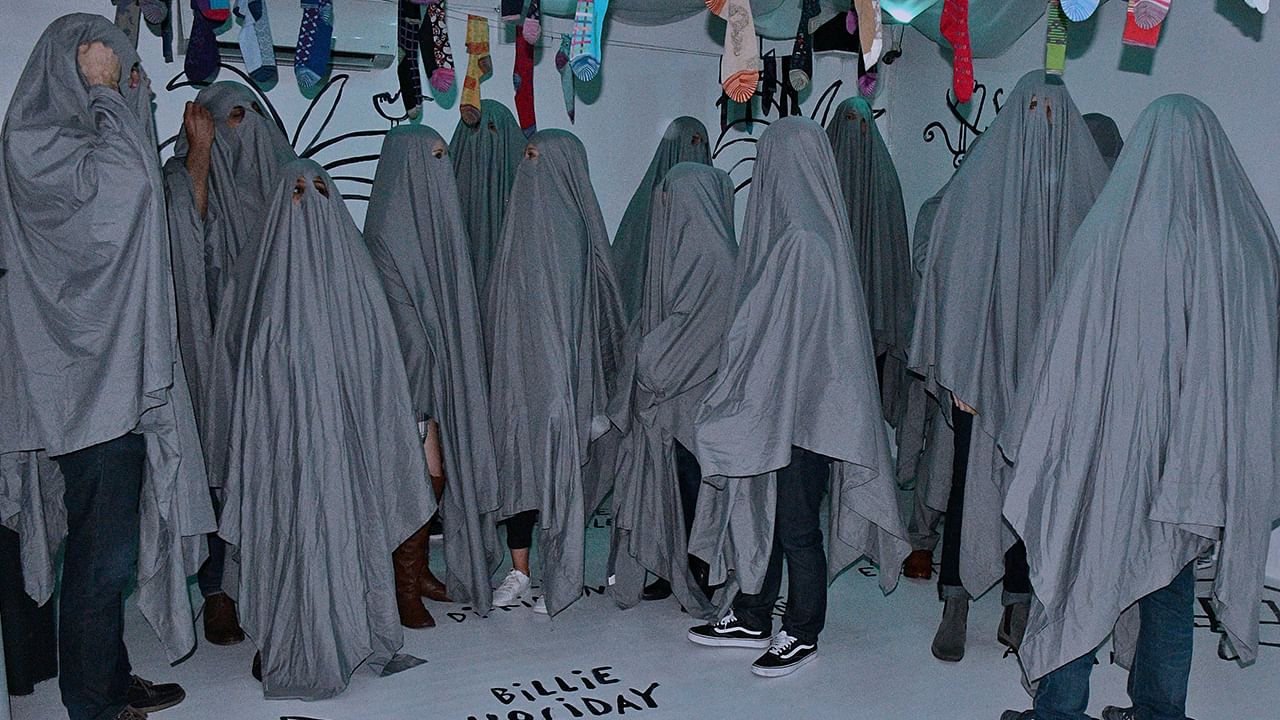When do you know it’s time to quit on an idea? (Giving up the Ghosts)
By Joshua Jay - Saturday, November 26, 2022

"Every year the aspiring photographer brought a stack of his best prints to an old, honored photographer, seeking his judgment. Every year the old man studied the prints and painstakingly ordered them into two piles, bad and good. Every year the old man moved a certain landscape print into the bad stack. At length he turned to the young man: 'You submit this same landscape every year, and every year I put it on the bad stack. Why do you like it so much?' The young photographer said, 'Because I had to climb a mountain to get it.'"
-Annie Dillard, The Writing Life
The loft in my New York City apartment is a graveyard of pipe dream tricks. Prototypes for ideas that didn’t quite work, but I can’t bring myself to throw away. Author Viktor Frankl calls ideas like these “mental children,” and points out that we’re attached to our ideas like they’re our children, overlooking their faults and heaping them with praise they probably don’t deserve. Not every idea is college bound.
*
There’s a Hungarian Military boot in my loft. Just one, with a prediction on the bottom of the sole that reads, “I knew you would choose the Meatball.” It would take too long to explain.
There’s a brick of cheese made out of legos that has a secret compartment on the inside that can hold a live hamster for up to two hours. And there are giant cue cards somewhere up there, with all the lyrics—one word per poster—to Journey’s "Don’t Stop Believing".
There are also forty bedsheets in my loft, with sloppy eye holes cut out, each one bearing the stale smell of human sweat. Many even have makeup stains; actual pressed faces of middle-aged women, like a New Jersey shorud of Turin. These sheets are musty memories from the original opening routine for my NYC residency show Six Impossible Things.
This piece, known as “Ghosts,” is the most tragic kind of magic trick: full of potential, but rife with problems. And that is precisely why you won't see it performed in the Six Impossible Things show we eventually recorded and released as a special stream and deluxe set this week.
*
A magician’s entrance to a show is important. I wanted it to be dramatic, interactive, and deceptive—but not by way of some cumbersome apparatus or a clichéd stunt. “Ghosts” seemed almost too good to be true.
I came up with the idea: upon arrival, each guest would be given a sheet with eye holes cut out to go over their heads, disguising them from each other and turning everyone in the room into "ghosts.”
When they file into a large, white room, a video of me would start playing and offer instructions that whittles the group down slowly to just one person…me. “I’m Joshua Jay,” I exclaimed as I ripped off my own “ghost” sheet. “Welcome to the show.” Gasps. Cheers. Rumblings of the greatest illusion since the DeKolta Chair. At least that’s how it went in my head.
We ran “Ghosts” for fifty shows, and when everything worked perfectly, it was amazing. Truly nobody expected me to be under the ghost sheet, and the elimination game seemed totally fair, with each spectator making a series of free decisions on where to stand and how to be eliminated. There was a nice synergy with the video, too, so that when people heard and saw me, they simply didn’t suspect that the real me was under the sheets.
From the start, there were problems. The beginning of “Ghosts” was always a thrilling surprise for me, standing in the crowd undetected, with only a thin sheet separating me from my audience. I did it, I thought. This is going to work.
But when I scanned the room, I had inadvertently staged a Ku Klux Klan meeting: twenty expressionless forms hooded in white sheets. And I wasn’t the only one who noticed. The crowd were fighting over each other to make Klan jokes. The people who weren’t making Klan jokes were talking to each other with bad Arabic accents, fashioning the sheets into burkas. My opener had become a hate crime.
I immediately changed to gray sheets to put an end to the Klan vibe, but apparently this made no difference. A New York Times journalist remarked in her review: “At show time, bedsheets the gray of a laundry accident were distributed and more or less willingly slipped on, ghost-style. In this national moment, is dressing up in sheets a good look?”

*
I began to chase the idea, seduced by how I felt—and how the audience reacted—when it went well. But as the show went on, the issues compounded. Economists refer to this as the Sunken Cost Fallacy, our natural tendency to stick with things we’ve invested time or money in, our judgment impaired by our attachment. I wasn’t about to throw away all that we had worked for.
Some people commented that they couldn’t breathe in the sheets, so we cut mouth holes. Then, one night, a man decided to rip through both eye holes to create one large, human-head-sized hole. He then donned his sheet like a graduation gown and proudly marched into the next room, oblivious to the people whose faces were still under the sheets.
Every few days we would see the Turban routine, exclusively from men. When they couldn’t figure out how to align two eye holes with their eyes, they fashioned the sheets into turbans, sometimes capes. These men were always very amused by their own bit.
Or my personal favorite, the woman who draped the sheet over her head, eye-holes be damned. I’m not sure if she was unfamiliar with the ghost sheet trope or if she never bothered to see what everybody else was up to, but this lady went for it. Once blinded by her sheet, she walked with impressive force through the crowd, like a bumper car, bouncing between the people and walls. She knocked over nearly every prop in the room, and I’m pretty sure she still has no idea she did. I glanced back at the woman’s family, but they didn’t seem concerned. They just sat and watched the way exhausted parents let their toddler explore a park.
All of these things were endlessly amusing to my crew. But it spoiled the mood of the piece, creating laughter where there should have been mystery.
Before giving up on the piece completely, I tried two other getups: “Fun Eco-Friendly Ghost Costumes.” These were manufactured ghost costumes that looked impressive on the website I ordered them through–like giant Casper-the-Ghost getups. But in real life, I was sent twenty skin-tight spandex robes with a curved protrusion for a head. Instead of twenty Klansmen that night, we had a room full of twenty giant penises. Everyone noticed the similarity. A couple of tipsy teenagers lifted the lightest person in their group to a horizontal position, chasing down their friends with a human-sized phallus. What a bunch of dicks.
*
I’m painting “Ghosts” like it was a nightmare trick that any sensible person would have cut after one show. But it’s more complicated than that. It’s a good idea, but not a good trick. That’s the problem with good ideas: they’re good. But good isn’t spectacular, and spectacular has to be the goal.
There was an audible gasp every night when I would uncover myself, and I hated losing that moment. I hated it. I think a lot about entrances to shows, and this was, for better and for worse, the most unique and interactive way I had ever encountered for beginning a magic show. I loved the idea of everyone coming into the venue and suiting up in ghost costumes.
Teller writes elegantly about this, reflecting on the years it took Johnny Thompson to hone the gag where a dove drops a perfectly formed glob of white poop on his black tuxedo lapel, and how even the formula for stain-free, fake excrement took enormous experimentation. “There is just one principle,” he writes. “Keep working after everyone else would quit.”
That’s so true, and you can get that advice from any number of places in any number of fields. But what those experts don’t talk about is the flip side: to know when to quit an idea. “There comes a time,” writes author Josh Jameson, “when you have to choose between turning the page and closing the book.”
So, I ask: when? Every idea is an investment in time and energy and money. And with any investment, there comes a time to look for the return. What do I get for a hundred and fifty hours I spent chasing “Ghosts?” Nothing, as it turns out, except a loft of sweaty sheets. And maybe this: sometimes we have to cut the good stuff, so that the truly incredible bits shine. “Ghosts” never made it past the first six weeks of the show, and while it pained me to do it, the show was better when we replaced it. Our shows are only as good as our weakest trick.
*
My mom came to visit recently, and in the way mothers do, she started poking around my apartment minutes after arriving. I heard her clamber up the steep ladder-style staircase to my loft and flick the light on. “What are those?” she asked.
I climbed up next to her, our two heads just above the loft floor. “What’s what?”
“Those!” she said, pointing to the boxes overfilled with sheets. White sheets, gray sheets, spandex costumes; together in a wrinkled lump.
“Ghosts,” I said. “My loft is haunted.”
Get your Copy of Six Impossible Things now
Back to blog homepage
Similar posts on the blog:

